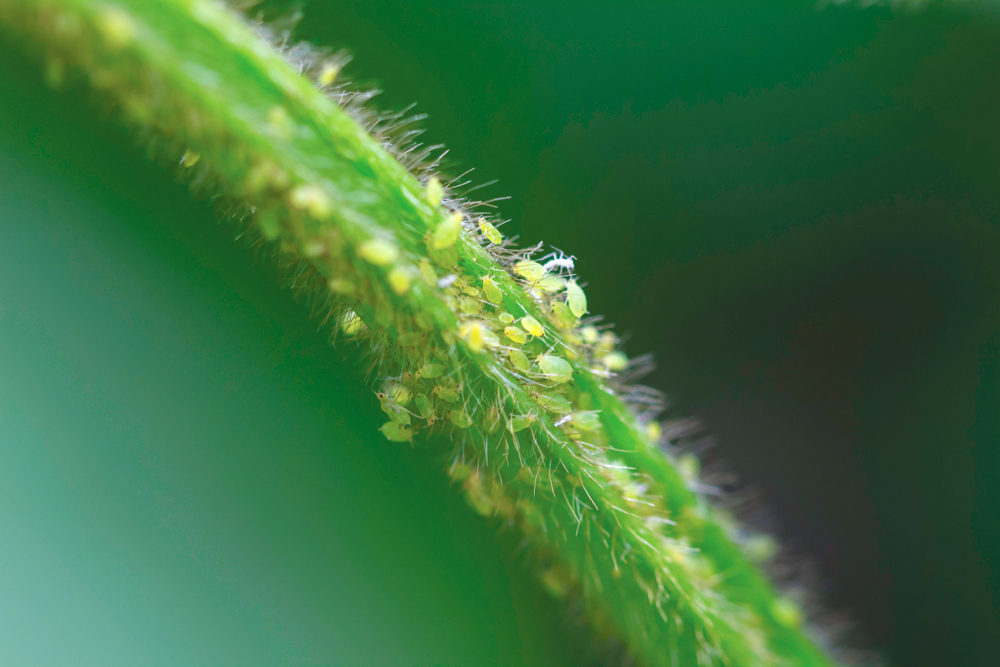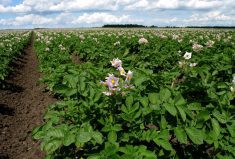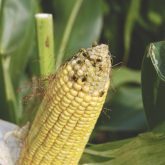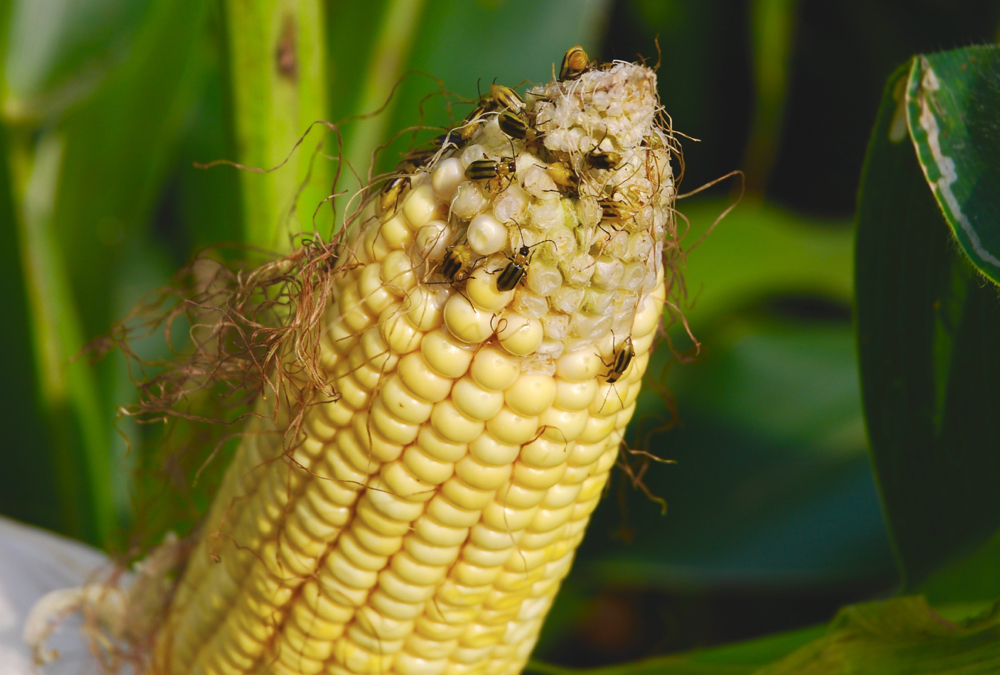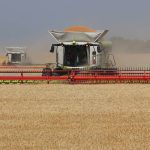Much anticipation always arrives with each new growing season. Successes are kept in perspective while past challenges are minimized, and the promise of a fresh start is enticing, if not a small source of anxiety.
It’s much the same for a product launch: there’s the potential to help growers enhance their crop production, whether it’s an innovative new seed technology or a new chemistry. Plot and field tests and registration processes are complete, and it’s time to put product to the test.
That is the situation for BASF and its newest insecticide Sefina, a Group 9D foliar formulation with the active ingredient afidopyropen that provides control of soybean aphids at all life stages. It’s listed as a dispersion concentrate and is applied in similar fashion to other soybean aphid insecticides with a threshold above 250 aphids per plant on 80 per cent of soybean plants during the R1 to R5 stage of development.
Read Also

Producers aren’t panicking over tariffs and trade threats
The influence of tariff and trade uncertainity on farm business decisions.
Sefina is also registered for use in potatoes for the control of green peach aphids and potato aphids, and for whitefly and silverleaf whitefly in sweet potatoes. Its horticulture counterpart is Versys, for use in vegetable crops as well as tree fruits.
According to Health Canada’s Proposed Registration Decision (PRD 2018-15), Sefina’s active ingredient “affects the nerves of aphids and whiteflies and stops the target insects from feeding on treated plants.”
“It’s a neuromuscular disrupter, so it’s similar to the way a neonic or pyrethroid would work quickly after application, but Sefina has a unique mode of action different from sodium channel disruptors,” says Anne McRae, technical service specialist with insecticides and horticulture with BASF. “Sefina binds at a very different site of action. Most of those neuromuscular products act within the first 24 hours. It’s a Group 9, subclass 9D, which they call a pyropene, so it attacks the chordotonal organs which insects have to help with orientation and gravity, hearing and balance.”

Chordotonal organs are unique to insects and crustaceans and do not exist in any other classes of the animal kingdom.
“Sefina blocks that signal open so it sends these continuous signals and the aphid can’t control its body movement and can’t sense where it is on the leaf — up or down, left or right,” says McRae. “Essentially, it can’t control what it’s doing and because of that, it can’t feed.”
Important reminder
The 250-aphid-per-plant threshold is an important tool in determining the threat from soybean aphids. The Field Crop Protection Guide, Publication 812 for 2018-19 from the Ontario Ministry of Agriculture, Food and Rural Affairs (OMAFRA) says that applications should take place only when the pest reaches the threshold level — or above.
“The threshold gives an approximate seven- to 10-day lead time before the aphids would reach the economic injury level, where cost of control is equal to yield loss,” says the guide. (Yield loss tends to occur at aphid populations of 600 or more per plant, notes McRae.)
The guide goes on to state, “Experience has shown that natural enemies can keep the aphid population fluctuating around the 250-aphid threshold.” At levels lower than 250, there’s a greater risk of killing off beneficial species, potentially clearing the way for aphid populations to increase, possibly at a faster rate.
The biggest plus
According to company literature, Sefina has shown sublethal effects to bees, and field studies have shown no effects on honeybee colony development, which has always been a cautionary aspect with insecticides used on soybean aphids. Publication 812 lists most products previously registered for use on aphids as toxic to bees or bee broods. Only one, flupryadifurone (Sivanto Prime) is “not toxic to bees through contact exposure and field studies conducted… have shown no effects on honeybee colony development.” The use of neonicotinoid seed treatments on soybeans is strictly limited to soybean seed production.
In spite of afidopyropen’s safety factor, McRae maintains the safest approach where bees are concerned is to simply avoid spraying during the day.
“I know that with all insecticides, they will have the statement, ‘Do not apply when bees are foraging,’” she says. “If bees are in the field, do not apply, and that’s a blanket statement for all insecticides.”
It’s that latter category into which Sefina falls: it does not kill bees nor does it have any effect on broods. Since it does have an impact on bees, it still warrants the “do not apply when bees are foraging” instruction on the label.
An unfortunate reality
Agronomists are eager to put this product to the test, but there hasn’t been much opportunity for ag retailers and advisors to see Sefina in action the past few years because soybean aphids have not been widespread across most of Eastern Canada. When asked for their assessment of the product, several retailers and crop advisors expressed their enthusiasm to see the product’s impact, or to say that they’ve heard only good things about it. But they haven’t been able to conduct plot tests or field-scale studies on soybean aphids in the past two or three years.
“We’ve done a number of small plot trials within our research group, and there are other provinces (where it’s been tested), and those trials looked very good,” says McRae. “As far as field-scale trials last year, we had a large research authorization program that was planned but we didn’t have that aphid population in soybeans to get those trials done.”
Typically, aphids become a problem with prolonged dry conditions through July and August, but for the past couple of years, conditions for higher populations have not developed.
There have been limited trials done in the U.S. that included Sefina. One, conducted by Iowa State University in 2018 had varied results comparing untreated checks to products that are registered in the U.S. The summary states that there were “significant reductions in aphid densities with foliar insecticides versus the untreated check, but there were no signficant differences among treatments for yield.”
Yet one school of thought on the use of insecticides cites the importance of killing pests, not whether its impact on yield is robust or disappointing. It’s not that the use of an insecticide will automatically boost yield, it’s that an insecticide will significantly reduce pest numbers, allowing the plant to develop to its full potential, including higher yields. It’s an important distinction. That’s why some retailers and advisors are not looking solely at yield differences when evaluating an insecticide. They want to know the insects are dying.


